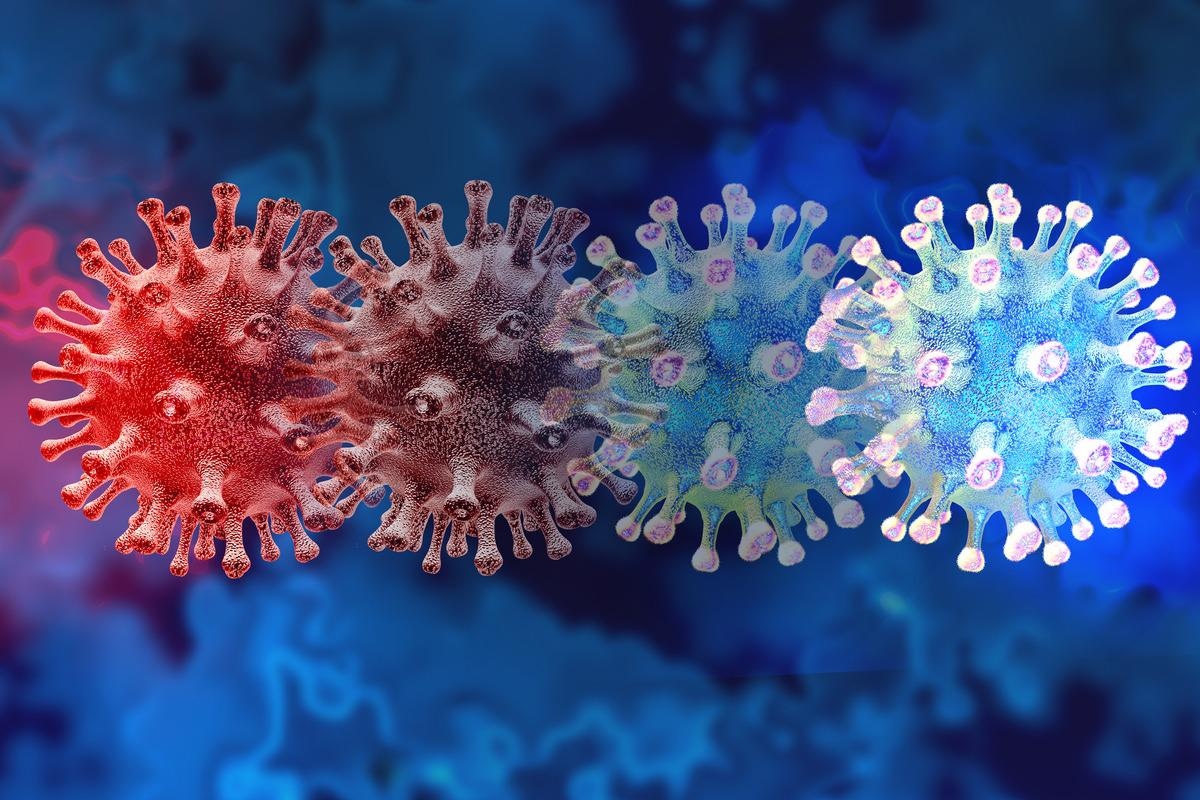A recent study published in the journal Viruses identified additional targets on severe acute respiratory syndrome coronavirus 2 (SARS-CoV-2) proteins to prevent the emergence of new SARS-CoV-2 variants of concern (VOCs).
 Study: Conserved Targets to Prevent Emerging Coronaviruses. Image Credit: Lightspring/Shutterstock
Study: Conserved Targets to Prevent Emerging Coronaviruses. Image Credit: Lightspring/Shutterstock
Various studies have reported sufficient coronavirus disease 2019 (COVID-19) vaccine efficacy against infection and disease severity. However, the continuous mutations in SARS-CoV-2 proteins have rendered the vaccines less effective against the viral variants.
About the study
The present study reviewed the life-cycle of SARS-CoV-2 and its existing and potential antiviral inhibitors to investigate novel antiviral targets.
The researchers analyzed the polymorphism exhibited by essential viral proteins to determine the most retained residues in bat and human β-CoV. The sequence variation analysis tool was used to examine seven essential CoV proteins from complete genomes in human and bat hosts and to determine the amino acid sequence and the conserved residues present in them. The protein sequences were then analyzed and assigned a polymorphic score according to the position of each amino acid. Residues assigned low polymorphic scores had the highest conservation of proteins and were ascertained as residues of interest.
The conserved residues were then located in the crystal structure of the protein and analyzed with an algorithm tool to predict the amino acid accessible surface area (ASA), which included solvent exposure and distribution of residues in the protein structure. The protein residues that were the most conserved and accessible were highlighted by the team.
Results
The study results showed that the structure and polymorphism analysis of nonstructural protein (nsp)-5 revealed a total of three highly conserved and accessible amino acid residues. Moreover, nsp5 amino acid sequences in human or bat hosts led to 405 retrieved samples. Also, within nsp5, 15 highly conserved residues with a polymorphic score of zero were found using polymorphism analysis of amino acid sequences. Among these 15 residues, 12 were resolved in the protein crystal structure.
Specific antivirals targeted the interaction between SARS-CoV-2 spike (S) protein receptor-binding domain (RBD) with the host cell surface receptor. For example, a lipoglycopeptide antibiotic called dalbavancin inhibits SARS-CoV-2 entry by blocking the host angiotensin-converting enzyme-2 (ACE-2) receptor. However, such antivirals are subject to CoV strain or variant. The study showed that the highly conserved S2 protein domain had heptad repeat sequences (HR1 and HR2) and the fusion peptide (FP) domain, which could be potentially used as targets to inhibit SARS-CoV-2 entry in the host.
Protease inhibitors target polyprotein cleavage to inhibit viral protein expression in several viruses; however, they had no significant activity against SARS-CoV-2. Identifying protease inhibitors using the main protease (Mpro) of SARS-CoV-2 revealed optimized CoV protease inhibitors, like Paxlovid, that showed sufficient efficacy against human CoVs (hCoVs).
The N-terminal nucleotidyltransferase (NiRAN) domain contained in the nsp12-encoded ribonucleic acid (RNA)-dependent RNA polymerase (RdRP) was found to be a potential target for the inhibition of viral replication. Notably, three SARS-COV-2 nsp8 residues, namely K58, P138, and R190 were instrumental in viral genome replication while the expression of nsp7, nsp8, and nsp12 was essential for replication. Examining the nsp7 amino acid sequences resulted in 405 retrieved sequences and five highly conserved residues with a polymorphic score of zero. A total of 57 conserved amino acid residues were found in nsp8 with a polymorphic score between zero and two.
Moreover, the coronavirus replicase complex is a crucial target for nucleotide analogs like ribavirin and remdesivir because it is a highly conserved residue. However, the exonuclease activity of Nsp14 reduces the efficacy of these analogs against SARS-CoV-2. Nevertheless, the viral exonuclease itself can be an important antiviral target that could improve the efficiency of nucleotide analogs. Another nucleotide analog called molnupiravir has the ability to escape the exonuclease activity of Nsp14 and targets RdRps, making it an important tool in controlling emerging SARS-CoV-2 VOCs.
The synthesis of nucleocapsid (N) phosphoproteins plays an essential role in the exit pathway of CoVs. Polymorphism analysis of N-protein amino acid sequences showed that 15 amino acid sequences were highly conserved and had a polymorphic score of zero. Among these, 13 were involved in the tertiary structure and protein folding. Hence, the blockage of N and RNA interaction would inhibit viral assembly as well as viral replication, making it a potential target for the inhibition of N-RNA interaction.
Conclusion
To summarize, the study reviewed the various current and potential antiviral therapies to prevent SARS-CoV-2 infections by inhibiting different targets. The researchers believe that targeting several activities and interactions of viral molecules in human and bat CoVs will lead to better protection against emerging variants of SARS-CoV-2.